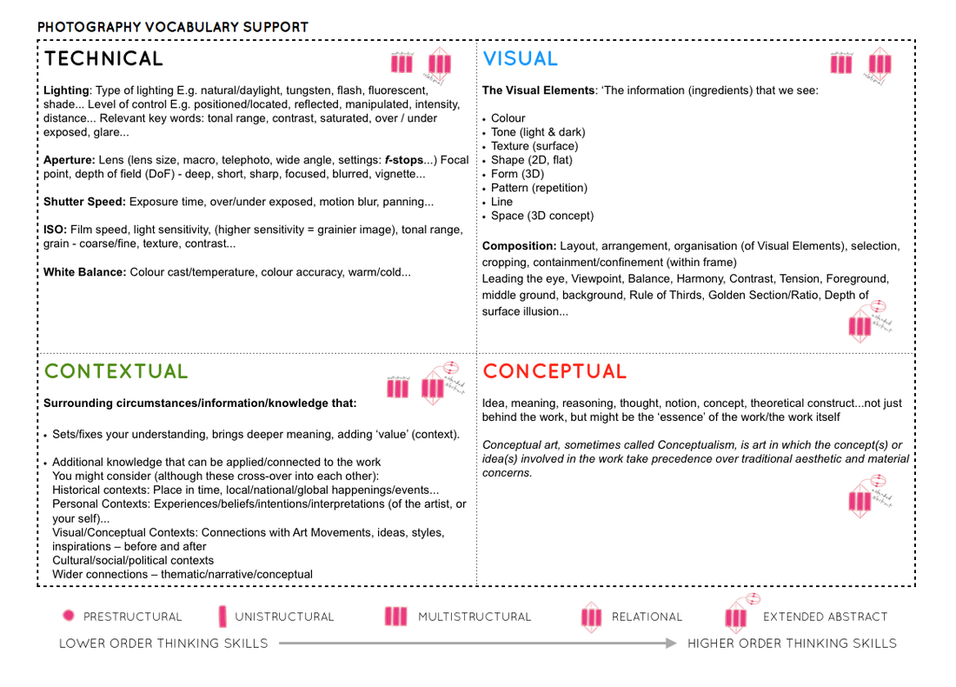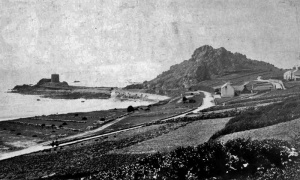Blog Posts To Make
- Blog post 1: ‘Landscapes Use this website to help you explore how Landscapes evolved as a genre. Some points to consider are listed below. Include images.
- Blog post 2: Romanticism’ – What is Romanticism? What are the ideals / characteristics of Romanticism? Include a case study of a Romantic Artists – John Constable. What is The Sublime? Include a case study of a an artist who includes the sublime in their work. – J.M.W Turner is a good example.
- Blog post 3: Landscape photoshoot 1. Include photos that you took over half term showing your personal response to rural landscapes / romanticism: Contact sheet, selection process, editing and final images
- Blog Post 4 Ansel Adams: Who is Ansel Adams? Explore ideas of visualisation and Zone System, include photo analysis.
- Blog Post 5: Exposure Bracketing – Show understanding of exposure bracketing and HDR imagery.
HW: respond to Ansel Adams / focus on…exposure bracketing and HDR - Blog Post 6: Photoshoot in response to Ansel Adams. Include contact sheet, selection process, editing and final outcomes.
- Blog Post 7: Panoramic Landscapes and Joiner photos – research and understanding
- Blog Post 8: Photoshoot 3: Show understanding of Panoramic Landscapes + Joiner Landscapes + own photo
- Extension Blog Post: Creative edits
Explore and experiment with some creative ways to edit and present your landscape photos. You can find some options here or research your own.

Intro / Photographing the environment
“…it is hard to consider the birth of the environmental movement without mentioning Carleton Watkins and the rippling, far-reaching influence of his 1861 images of Yosemite National Park. All that came after President Lincoln’s signing of the Yosemite Grant, Muir’s nature writing, the founding of conservation groups such as the Sierra Club – can be traced back to the intake of breath when his images were seen for the first time.”
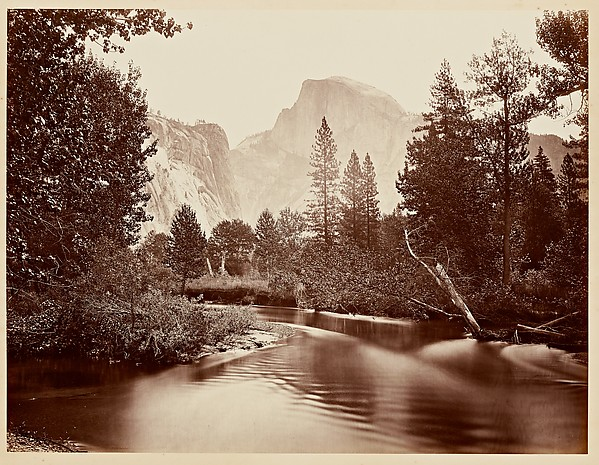
Tasayac, the Half Dome, 5000 ft., Yosemite
Carleton E. Watkins American 1865–66
20th Century 1900 —
Ansel Adams
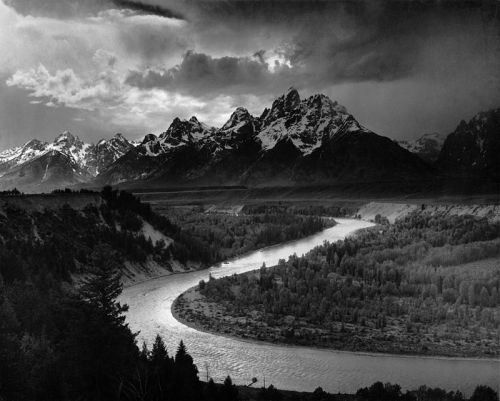


large-format camera
Ansel Adams was an American landscape photographer and environmentalist known for his black-and-white images of the American West. He helped found Group f/64, an association of photographers advocating “pure” photography which favored sharp focus and the use of the full tonal range of a photograph…even creating a Zonal System to ensure that all tonal values are represented in the images. Ansel Adams was an advocate of environmental protection, national parks and creating an enduring legacy of responses to the power of nature and sublime conditions…Other members in Group f/64 included Edward Weston, but also Imogen Cunningham among other female photographers who have often been overlooked in the history of photography.
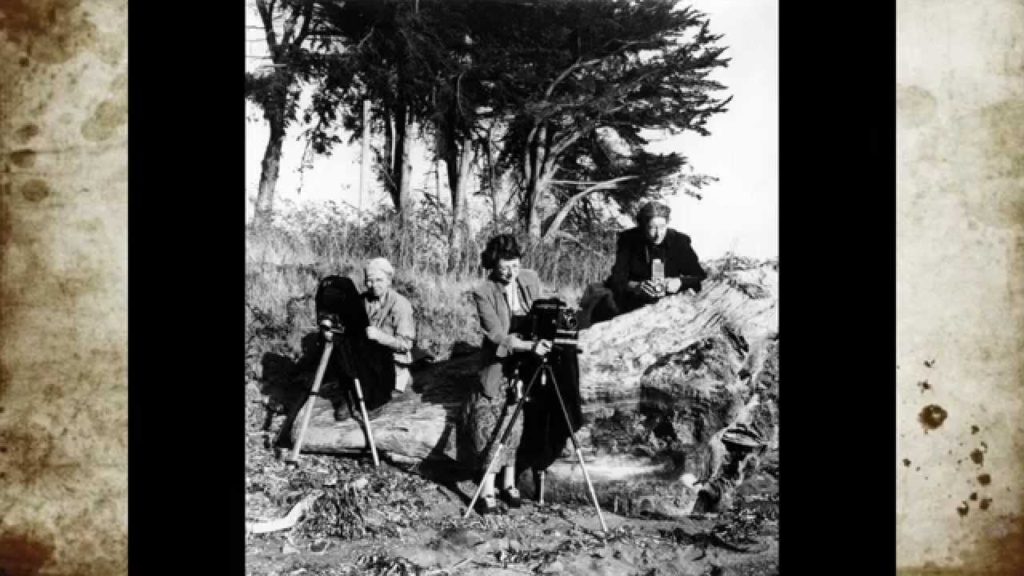
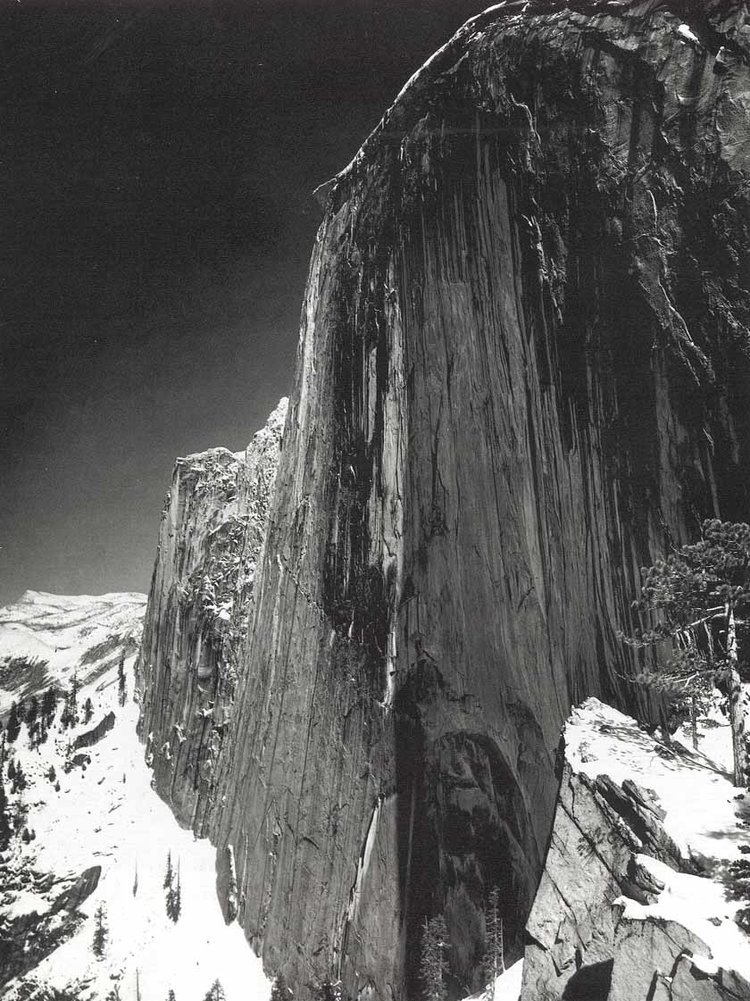


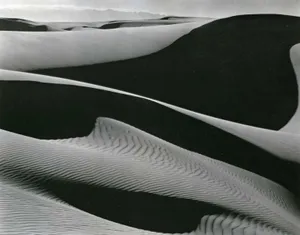
Key Features
Ansel Adams’s photographic style is characterized by its sharp focus, exceptional detail, and dramatic use of light and shadow. He sought to capture the grandeur and beauty of the natural world, emphasizing the importance of preserving these pristine landscapes.
One of the key compositional techniques that Adams employed in many of his images was to place the horizon about two-thirds of the way up the frame. This would mean the composition was biased in favour of the landscape rather than the sky and would help to communicate the epic scale of the scene
IMAGE ANALYSIS:
IMAGE ANALYSIS: For your analysis of Adams’ work and practice, try and find the story behind the image – as an example, see Monolith, the face of Half Dome, 1927
EXTENSION > COMPARE & CONTRAST: Compare and contrast the work of Ansel Adams and Edward Weston using Photo Literacy Matrix. Find 3 quotes that you can use in your analysis, that either supports/ disapprove your own view. Make sure that you comment on the quote used.
For example, you can use quotes:
1. a quote from Adams’ on Weston’s influence
2. a quote from Adams’ on his own practice, eg. technique, pre-visualisation (zone system), subject (nature), inspiration etc.
3. a quote from Weston on Adams’ images.
4. a quote from someone else, for example a critic, historian that comments either on Adams’ or Weston’s work.
I can’t tell you how swell it was to return to the freshness, the simplicity and natural strength of your photography … I am convinced that the only real security lies with a certain communion with the things of the natural world
— A letter from Edward to Ansel in 1936
Practical / Creative Responses
Create a mind-map + mood-board of potential locations around Jersey that you could record as a response to Ansel Adams….look for extremes (either calm or wild, derelict, desolate, abandoned or stormy, battered and at the mercy of nature)
HOMEWORK Monday 24th Feb – Monday 3rd March deadline
Monday 24th Feb – Monday 3rd March deadline
- Take 150-200 photos of landscapes in response to Ansel Adams and the f/64 groups work.
- There are plenty of areas to explore locally…woods, streams, fields, beaches, coastal paths, sand dunes etc
- Add your edited selective contact sheets / select your best 6-10 images / include edits and screen shots to show this process on the blog
- Ensure you include both monochrome and colour examples
- You could use exposure bracketing to create HDR images inspired by Ansel Adams.
AIM to photograph the coastline, the sea, the fields, the valleys, the woods, the sand dunes, Cliffs etc.
USE the wild and dynamic weather and elements to help create a sense of atmosphere, and evoke an emotional response within your photo assignment.
PHOTOGRAPH before dark, at sunset or during sunrise…and include rain, fog, mist, ice, wind etc in your work
LOOK for LEADING LINES such as pathways, roads etc to help dissect your images and provide a sense of journey / discovery to them.
Ensure that you include the following key terms in your blog posts…
- Composition (rule of thirds, balance, symmetry)
- Perspective (linear and atmospheric, vanishing points)
- Depth (refer to aperture settings and focus points, foreground, mid-ground and back-ground)
- Scale (refer to proportion, but also detail influenced by medium / large format cameras)
- Light ( intensity, temperature, direction)
- Colour (colour harmonies / warm / cold colours and their effects)
- Shadow (strength, lack of…)
- Texture and surface quality
- Tonal values ( contrast created by highlights, low-lights and mid-tones)
REMEMBER you MUST use PHOTO-LITERACY (TECHNICAL / VISUAL / CONTEXTUAL / CONCEPTUAL) to analyse effectively.
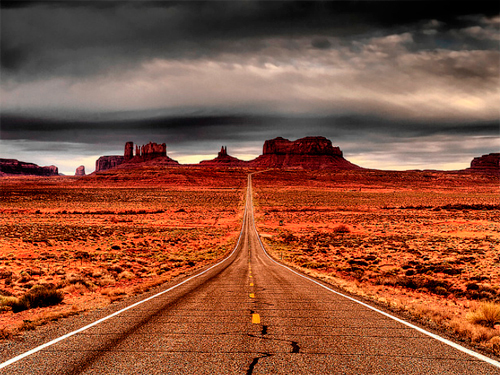
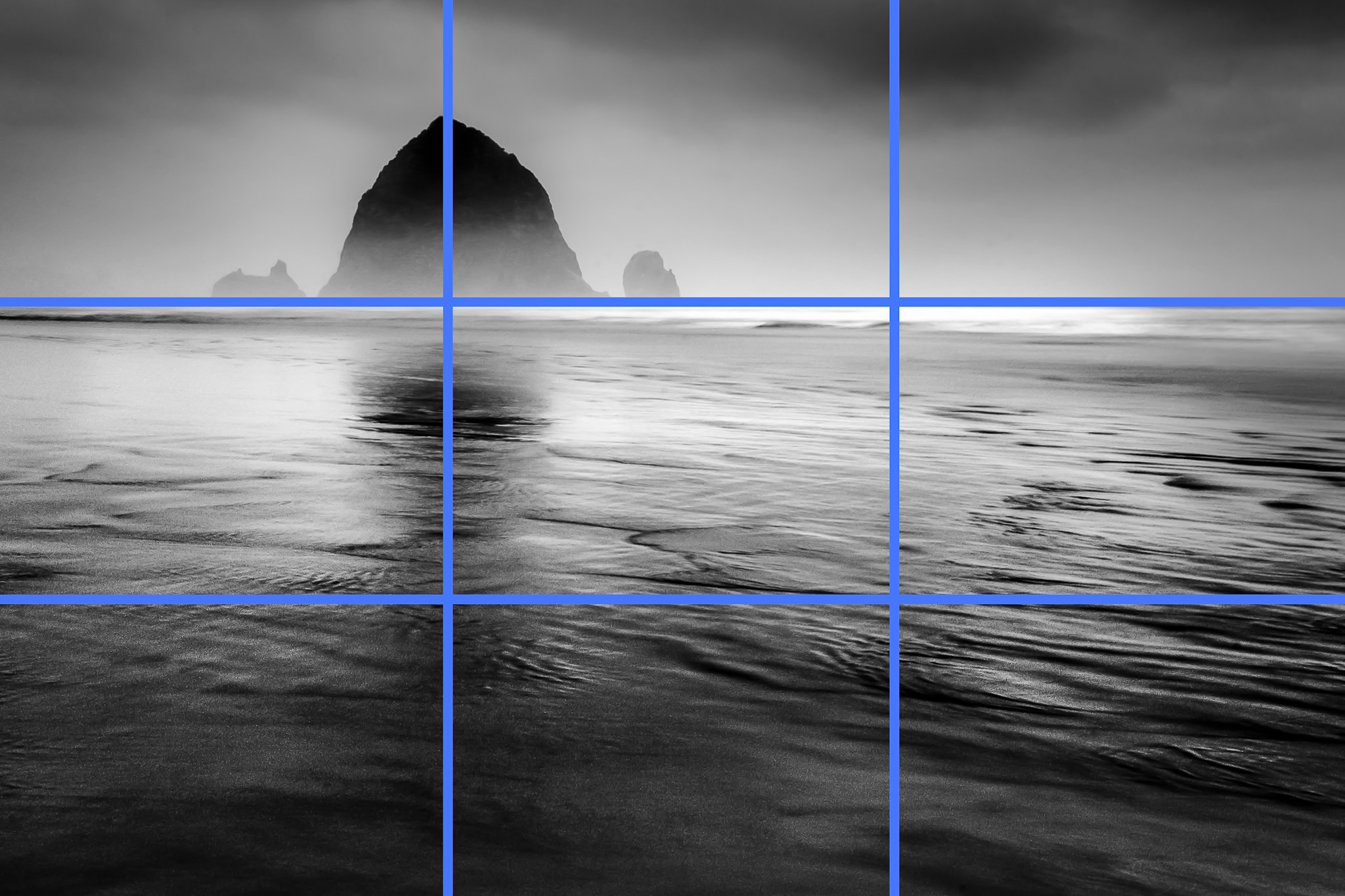

Definitions
development: a chemical process, carried out in the dark, which makes the image exposed on the film visible and permanent in negative form.
exposure: the amount of light that falls on the film (which will become the photographic negative). This is regulated by controlling the size of the aperture through which light enters the camera and/or the length of the exposure.
gray card: a standardized card, used for measuring light, which corresponds to Zone V, or mid-tone gray.
hand-held light meter: a light-measuring device that is separate from the camera. A spot meter, which covers a one degree angle, is ideal for measuring target zones.
previsualization: a mental exercise in which the photographer imagines the subject in terms of the black, white, and grays desired in the final photographic print.
spot meter: a type of hand-held meter that allows the photographer to easily measure light falling on very small areas within the subject matter.
zones: a specific set of tonal values consisting of pure black, the base white of the black-and-white photographic paper, and eight or nine shades of gray in between [see Zone Scale Card]. When the Zone System is used, the darkest areas of a photographic image are referred to as low values (Zones I — III), the gray areas are called middle values (Zones IV — VI), and the light areas are high values (Zones VII — IX). The zones are always referred to by roman numerals.
EXPOSURE BRACKETING
Exposure bracketing means that you take two more pictures: one slightly under-exposed (usually by dialing in a negative exposure compensation, say -1/3EV), and the second one slightly over-exposed (usually by dialing in a positive exposure compensation, say +1/3EV), again according to your camera’s light meter.

TASK : try a few variation of exposure bracketing to create the exposures that you want…you may already have pre-sets on your phone or camera to help you do this, but experimenting manually will help your understanding!
AEB:
Many digital cameras include an Auto Exposure Bracketing (AEB) option. When AEB is selected, the camera automatically takes three or more shots, each at a different exposure. Auto Exposure Bracketing is very useful for capturing high contrast scenes for HDR (HDR stands for High Dynamic Range and refers to a technique that expresses details in content in both very bright and very dark scenes.).
…by taking the same photograph with a range of different exposure settings
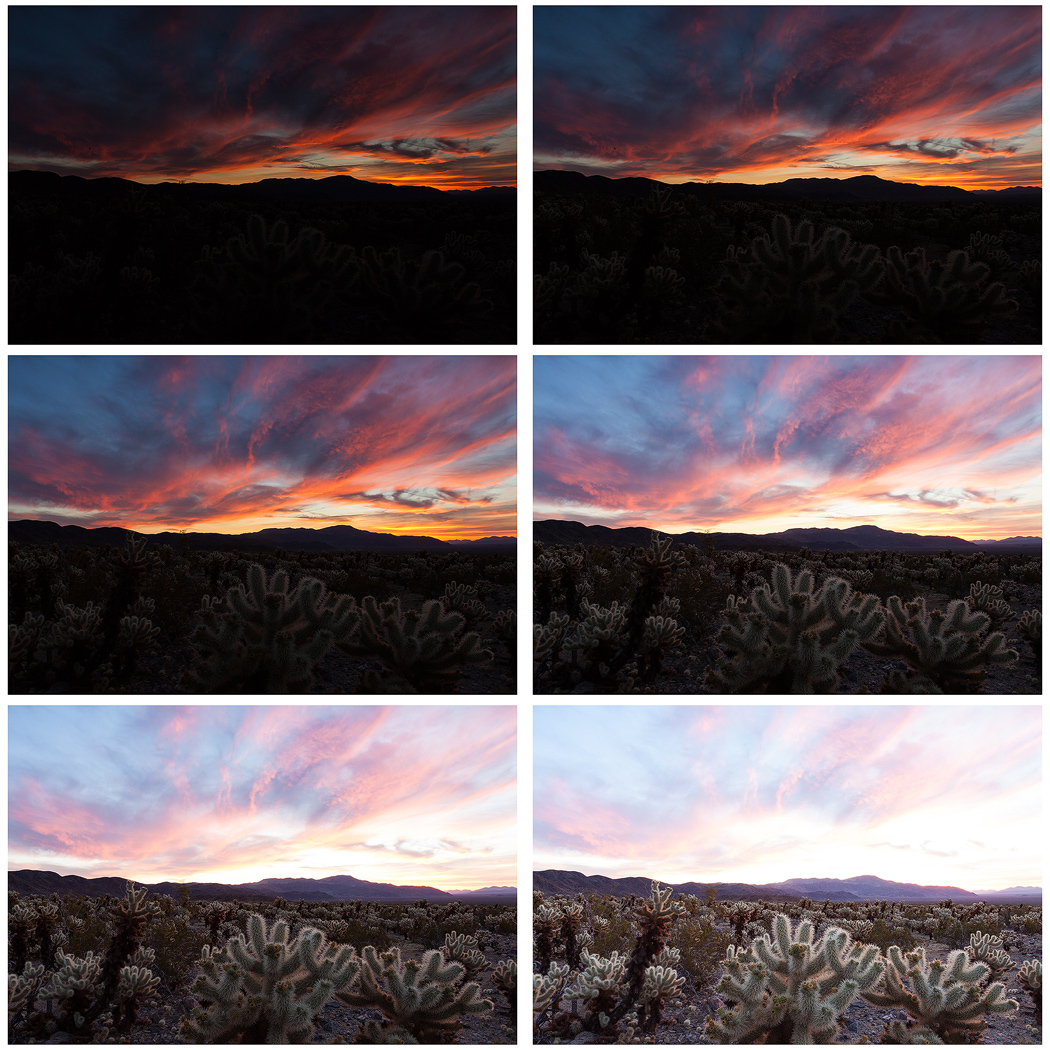
How to use Exposure Bracketing on the Camera:
There are two ways to use Exposure Bracketing on your camera: 1. With exposure compensations. 2. With the AEB Setting (Automatic Exposure Bracketing)
Exposure Compensation:
– This is how you manually set the exposure for each photo…
– You can use Exposure Compensation to quickly adjust how light or how dark your exposure will be using these controls…
– Start with 1 stop variations. So, take a shot at -1 on the exposure compensation dial, then turn the dial so it reads -2 and then -3. Repeat, this time overexposing at +1, +2, and +3. You may not use all these images in the final HDR but it’s good to have the data just in case
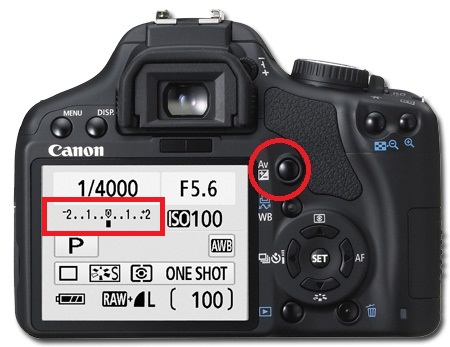
AEB:
Or set the amount of “bracketing” like below…
(If you are using the larger DSLR cameras from school, follow the instructions below… if you are using the smaller mirrorless cameras from school, follow this link for instructions)
- In the menu, select the second tab and go to ‘Expo. Comp. /AEB
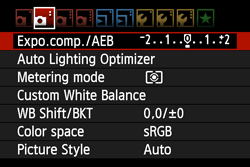
- Use the dial on the top of the camera to set the range of exposure you want to capture with your 2nd and 3rd photo
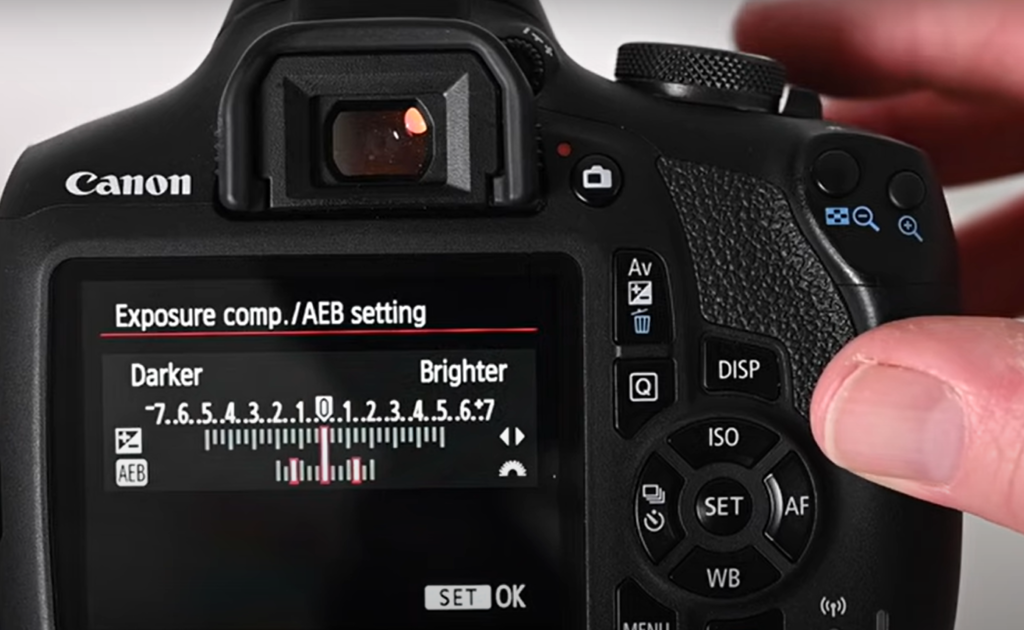
- After you have set the exposure range, you will see two extra marks on the exposure metre…

- Now take 3 photos and your camera will automatically change the exposure for each one.
- TIP: You can also set the camera to continuous shooting, to take 3 photos in close succession – all you need to do is hold the shutter button down.


HDR photography is a technique where multiple bracketed images are blended together to create a single beautifully exposed photograph with a full dynamic range of tones from the very dark to the very brightest.
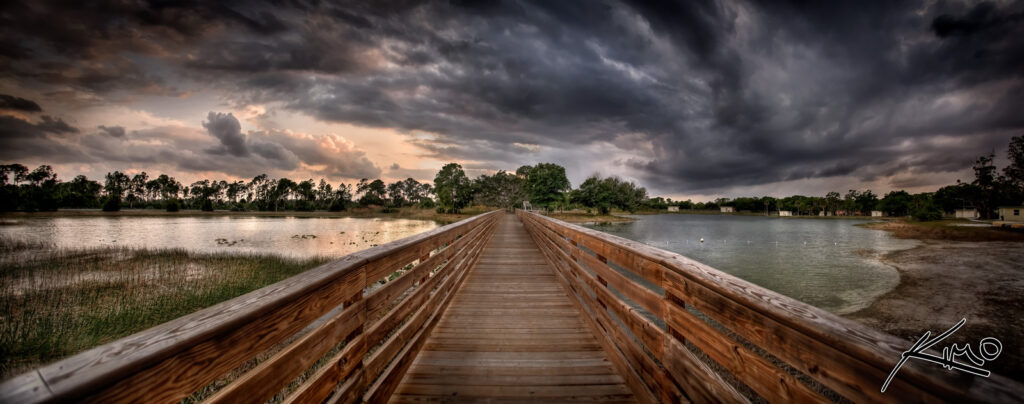



Your camera can only capture a limited range of lights and darks (i.e., it has a limited dynamic range). If you point your camera at a dark mountain in front of a bright sunset, no matter how much you tweak the image exposure, your camera will generally fail to capture detail in the mountain and the sky; you’ll either capture an image with a beautiful sky but a dark, less detailed mountain, or you’ll capture an image with a detailed mountain but a bright, blown-out sky. High dynamic range photography (HDR) aims to address this issue. Instead of relying on the camera’s limited dynamic range capabilities, you take multiple photos that cover the entire tonal range of the scene.

Ansel Adams zone system was in essence a pre-cursor of HDR with the outcome of producing an image with a full range of tones showing details in both the bright areas and dark shadows.
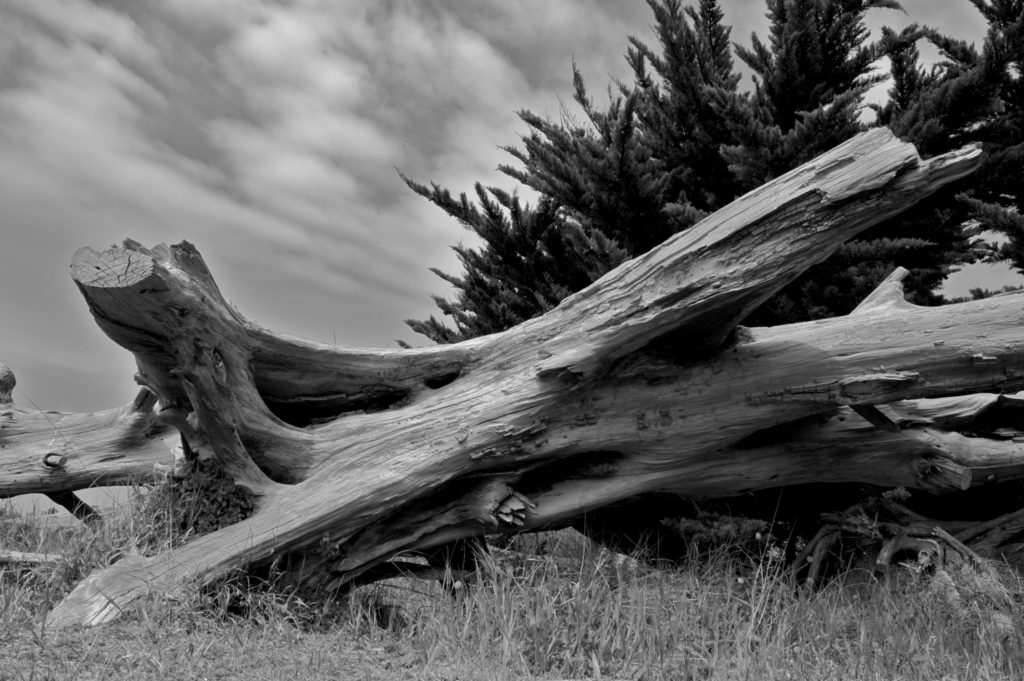
How to merge your images to create your HDR images in Photoshop:
1. Open your photos in Lightroom Classic
2. highlight the 3 images you want to merge
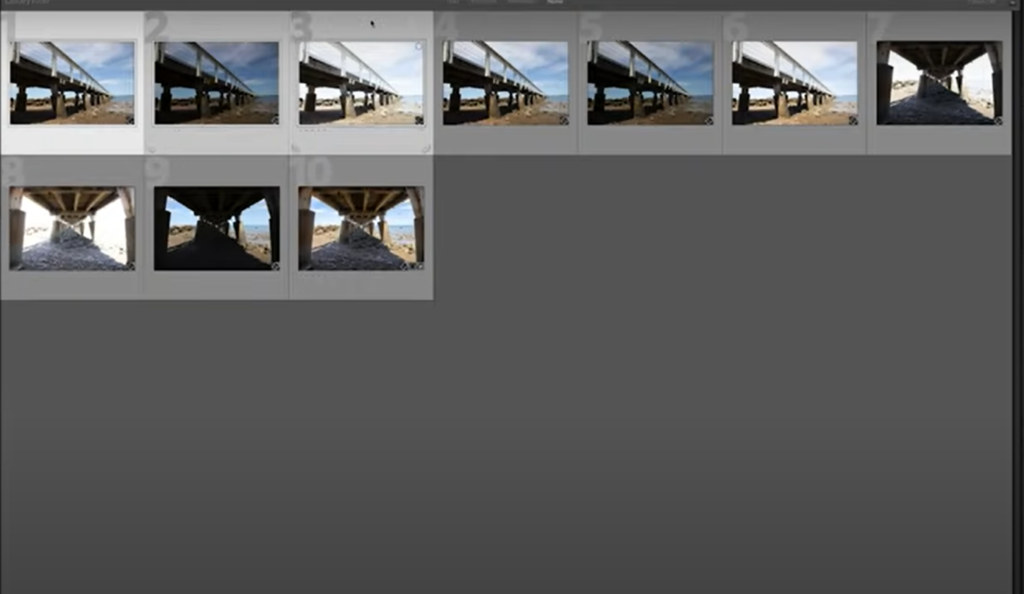
3. Go to the top and click Photo>Photo Merge>HDR

4. If you’re happy with the preview, click merge

This will create a new HDR image and add it to your library.
Further Creative Responses
During the month of March you will carry out further photo-assignments designed to encourage more creative approaches…
- Panoramic Landscapes
- Joiner Landscapes
Panoramic Landscapes
Panoramic landscapes are wide, expansive views that capture a large area of scenery in one image, often showcasing the beauty of nature.

Considerations When taking your photos:
Level surface, arc-like open landscape. Try to visualise how your landscape will look divided into slices (5-10 slices). Move your camera along a steady plane, use a tripod if possible.
How to create your own Panoramic photos in Lightroom
- Select the source images in Lightroom Classic.
-
- For standard exposure photos, select Photo > Photo Merge > Panorama
- For exposure bracketed photos, select Photo > Photo Merge > HDR Panorama to merge them into an HDR panorama.
- In the Panorama Merge Preview / HDR Panorama Merge Preview dialog box, choose a layout projection:
Spherical: Aligns and transforms the images as if they were mapped to the inside of a sphere. This projection mode is great for really wide or multirow panoramas / HDR panorama.
Perspective: Projects the panorama / HDR panorama as if it were mapped to a flat surface. Since this mode keeps straight lines straight, it is great for architectural photography. Really wide panoramas may not work well with this mode due to excessive distortion near the edges of the resulting panorama.
Cylindrical: Projects the panorama / HDR panorama as if it were mapped to the inside of a cylinder. This projection mode works really well for wide panoramas, but it also keeps vertical lines straight.All of these projection modes work equally well for both horizontal and vertical panoramas / HDR panoramas.
Cylindrical layout projection for wide panoramas/ HDR panoramas - You can use Boundary Warp slider setting (0-100) to warp panoramas / HDR panoramas to fill the canvas. Use this setting to preserve image content near the boundary of the merged image, that may otherwise be lost due to cropping. The slider controls how much Boundary Warp to apply. Higher slider value causes the boundary of the panorama/ HDR panorama to fit more closely to the surrounding rectangular frame.
- Select Fill Edges to automatically fill the uneven edges of the merged image.
- While previewing the panorama / HDR panorama, select Auto Crop to remove undesired areas of transparency around the merged image.
Auto Crop to remove areas of transparency, shown in white in this illustration - To group the source images and the panorama / HDR panorama image into a stack (after the images are merged), select the Create Stack option. The merged panorama / HDR panorama image is displayed at the top of the stack.
- Once you’ve finished making your choices, click Merge. Lightroom Classic creates the panorama / HDR panorama and places it in your catalogue.
David Hockney Joiner Photo-collage

Pearblossom Highway is a piece of art created by the British artist David Hockney. It depicts a view of an American Highway. It is a collage compiled from over 700 separate photographs. The artist himself describes his work as a drawing as opposed to a photographic piece.
‘Pearblossom Highway’ shows a crossroads in a very wide open space, which you only get a sense of in the western United States. . . . [The] picture was not just about a crossroads, but about us driving around. I’d had three days of driving and being the passenger. The driver and the passenger see the road in different ways. When you drive you read all the road signs, but when you’re the passenger, you don’t, you can decide to look where you want. And the picture dealt with that: on the right-hand side of the road it’s as if you’re the driver, reading traffic signs to tell you what to do and so on, and on the left-hand side it’s as if you’re a passenger going along the road more slowly, looking all around. So the picture is about driving without the car being in it.
Thus David Hockney described the circumstances leading to the creation of this photocollage of the scenic Pearblossom Highway north of Los Angeles. His detailed collage reveals the more mundane observations of a road trip. The littered cans and bottles and the meandering line where the pavement ends and the sand begins point to the interruption of the desert landscape by the roads cutting through it and the imprint of careless travellers.
Create a joiner collage in Photoshop
Considerations
Choose a suitable landscape. Visualise how you can photograph the view in “chunks”. Start on one side and work your way around the view carefully photographing it in a grid-like manner. Do not worry if your images overlap—often this is better anyway…then merge your images in photoshop or print them out, arrange and glue together

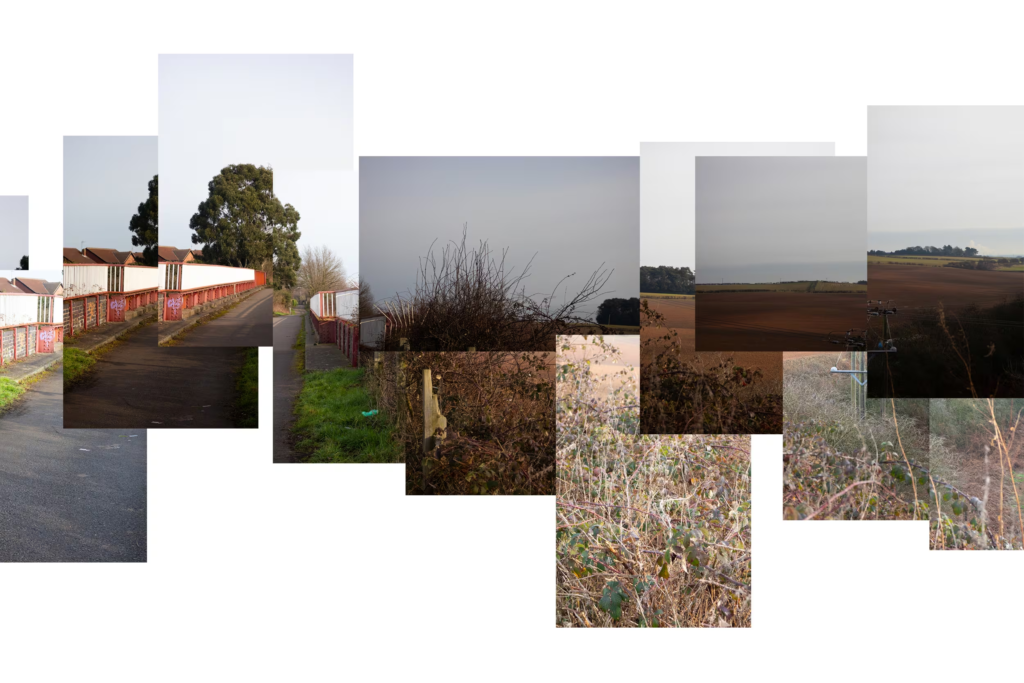
Always follow the 10 Step Process and create multiple blog posts for each unit to ensure you tackle all Assessment Objectives thoroughly :
- Mood-board, definition and introduction (AO1)
- Mind-map of ideas (AO1)
- Artist References / Case Studies (must include image analysis) (AO1)
- Photo-shoot Action Plan (AO3)
- Multiple Photoshoots + contact sheets (AO3)
- Image Selection, sub selection, review and refine ideas (AO2)
- Image Editing/ manipulation / experimentation (AO2)
- Presentation of final outcomes (AO4)
- Compare and contrast your work to your artist reference(AO1)
- Evaluation and Critique (AO1+AO4)
Photo Literacy Matrix
